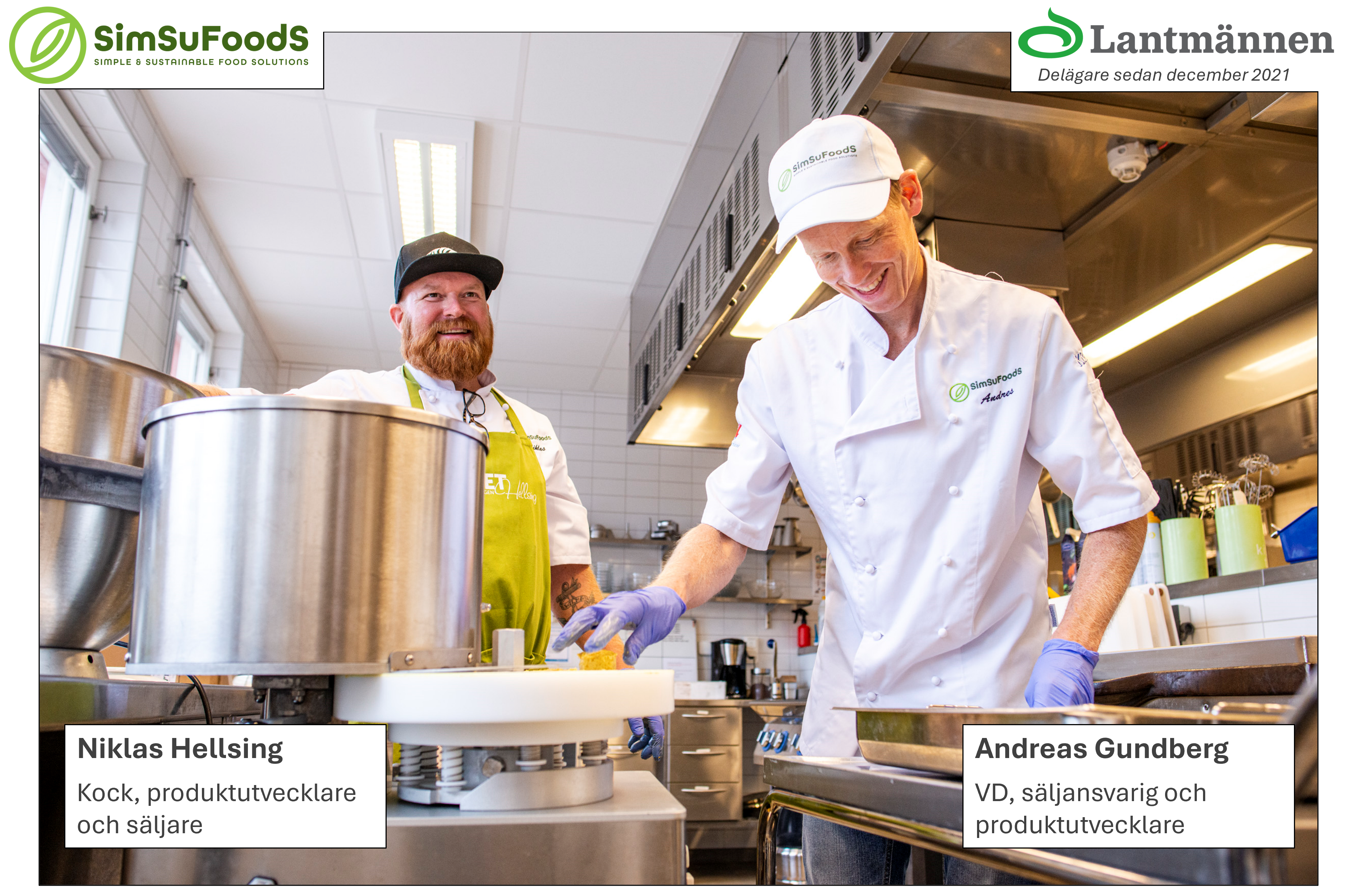Simple & Sustainable Food Solutions
"Färs för mindre än 30 sek/kg, perfekt för 50/50 rätter"
"Världens mest klimatsmarta kebab"
Crisis box
Why you should use SimSuFoods
Good for the climate
Vegetable proteins generally have lower emissions than animal proteins. Our dry products also reduce the need for transportation and do not require refrigeration or freezing. The fact that the products also have a long shelf life makes it easier to reduce waste.
Cost-effective
We simplify the value chain from Swedish agricultural raw materials to ready meals, enabling cost-effective meals. Several of our recipes are under 4 sec/portion for the protein and you can, for example, make a mince on our Simsubas for under 30 sec/kg.
Swedish raw materials
All of our products are free of additives and labeled "From Sweden". This is something we are proud of, as there is great potential in Swedish agriculture and to increase the degree of self-sufficiency in food. Today it is around 60%.
High protein content
With our products you can easily make shreds, steaks, 50/50 dishes etc with high protein content and really good texture. The products also have a very good binding capacity, which makes them ideal for use as vegetable steaks, for example.
Our products - Commercial kitchens
With our products you can quickly and easily prepare shreds, steaks, gratins, 50/50 dishes or even protein-enriched breads and desserts.
Samtliga av våra produkter är fria från tillsatser och märkta ”Från Sverige”. För att få rätt textur och näringsprofil jobbar vi med en kombination av proteiner från havre, ärta, åkerböna, vete, potatis och jäst. Samtliga produkter är väldigt utrymmeseffektiva vilket gör de till ett givet alternativ i beredskapslagret.
Dishes get their texture when mixed with water, oil and spices. They can then be cooked in the oven or by frying.
See all recipes here.
Who are we?
SimSuFoodS was founded in 2019 by Andreas Gundberg, Niklas Hellsing and Anna Gundberg. By combining our collective expertise and experience in sustainability, cooking and product development, we want to think new and make an impact.
We are based in Kimstad outside Norrköping where all our products are also produced. Since 2023, together with Lantmännen, we have a modern test kitchen and application lab.
Curious to test our products in your commercial kitchen?

What do our customers think?
Helene Andersson, Head of Nutrition, Karlstad Municipality

What do our customers think?
Helene Andersson, Head of Nutrition, Karlstad Municipality
- What do you use SimSuFoodS products for?
- How long have you been using SimSuFoodS products?
- What do you think is the best thing about SimSuFoodS products?
- Do you have any advice or tips for those interested in trying SimSuFoodS products?
Frequently asked questions - FAQ
How does your concept work?
What raw materials do you use and where do they come from?
How much does the product swell?
Why do you use wheat gluten in your products?
When I try to make a steak, I get more of a rubbery texture, what am I doing wrong?
Will the finished dish deteriorate if it is stored in the fridge or freezer?
Do you also sell finished products?
How do you calculate your CO2 footprint?







